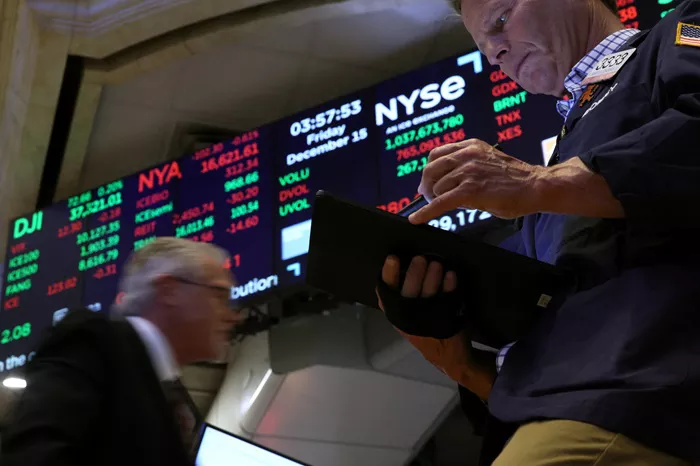As Wall Street braces for the quarterly earnings cycle, major U.S. banks are set to provide crucial insights into the financial landscape amidst the Federal Reserve’s interest rate adjustments and ongoing economic uncertainty. Starting with JPMorgan Chase & Co. and Wells Fargo & Co. on Friday, followed by Citigroup Inc., Morgan Stanley, Goldman Sachs Group Inc., and Bank of America Corp. next week, the earnings reports are anticipated to reflect the current state of both consumers and businesses, making them a focal point of the earnings season.
A Critical Earnings Season for Banks
Bank stocks experienced a significant rally, surging nearly 10% in the third quarter as optimism grew around the Fed’s impending rate-cutting cycle and the resilience of the economy. This context makes the latest earnings reports essential to determine whether expectations have become overly optimistic.
In the second quarter, U.S. banks reported robust earnings, ranking among the top performers within the S&P 500 sub-industries. They notably outperformed the broader S&P 500 Index, according to data from Bloomberg Intelligence. Investors will be keenly focused on key indicators such as net interest income, loan and deposit growth, credit quality, and consumer spending patterns as the Fed begins to lower interest rates from their highest levels in over 20 years.
Stock Performance and Analyst Sentiments
The KBW Bank Index has seen an impressive rise of nearly 21% this year, aligning closely with the S&P 500. This achievement is noteworthy, especially as the broader index’s gains have been largely driven by technology giants like Nvidia and Apple. However, the recent rally has pushed bank stocks back to levels seen in late July, prompting analysts to express mixed sentiments about the future.
Currently, analysts are divided evenly between buy and hold ratings, indicating a split in expectations for the upcoming earnings. While some analysts foresee improving conditions, others advise caution. Piper Sandler’s analyst R. Scott Siefers noted, “Investors still seem optimistic about 2025 prospects, but with lingering near-term anxiety on net interest income.” This sentiment underscores the potential volatility ahead.
Caution from Key Bank Executives
Recent statements from key banking executives have heightened concerns about future earnings. JPMorgan’s President and COO, Daniel Pinto, caused shares to dip when he cautioned that analysts might be overly optimistic about projected expenses and net interest income as interest rates decline. He suggested that the previously estimated net interest income of $89.5 billion was “not very reasonable,” hinting that the figure could be lower than expected.
Moreover, the Federal Reserve’s recent half-percentage-point cut in September has not yet had a significant effect on third-quarter interest income, meaning the focus will be on the outlook for the fourth quarter and beyond. Analysts at Wedbush Securities Inc. predict another quarter of mixed results, with “the benefits from a lower rate environment” becoming more apparent in subsequent quarters.
Investment Banking and Consumer Borrowing Potential
While the decline in interest rates presents challenges, it also opens up opportunities for banks. Lower rates can spur increased bond sales, consumer borrowing, and trading activity, all of which could enhance profits. Analyst Vivek Juneja from JPMorgan identified investment banking fees as a potential bright spot, projecting that lower debt financing costs could encourage mergers and acquisitions (M&A) activity. He noted, “We view this as a major positive for M&A activity,” emphasizing the potential benefits for major banks like Bank of America, Citi, and Wells Fargo in terms of market-related revenues.
Looking Ahead: Economic Growth and Stability
The October earnings period occurs against the backdrop of the Fed’s rate-cutting cycle and the upcoming U.S. presidential election in November. The uncertainty surrounding these events has led to some caution among analysts and investors. Jason Goldberg, a U.S. Large-Cap Bank Equity Analyst at Barclays PLC, pointed out that “banks never trade well amid uncertainty,” suggesting that clarity following the election could help alleviate some concerns, regardless of the outcome.
Ultimately, the prevailing expectation is that lower interest rates will provide a boost to the economy, potentially allowing the U.S. to avoid a recession. This positive outlook hinges on increased consumer spending and loan growth, which would be beneficial for banks in the upcoming quarters. As Goldberg succinctly stated, “What matters most is overall economic growth; at the end of the day, bank stocks are a reflection of the economy.”
Conclusion
As the earnings reports roll in, the insights from major U.S. banks will be instrumental in assessing the health of the financial sector amid shifting interest rates and economic uncertainty. Investors will be looking closely at key metrics and executive commentary to gauge the banks’ resilience and future performance. With optimism for economic growth on the horizon, the outcomes of these reports will not only influence bank stocks but also provide a clearer picture of the broader economic landscape.
Related Topics:

